#the home of Sir Walter Scott
Text



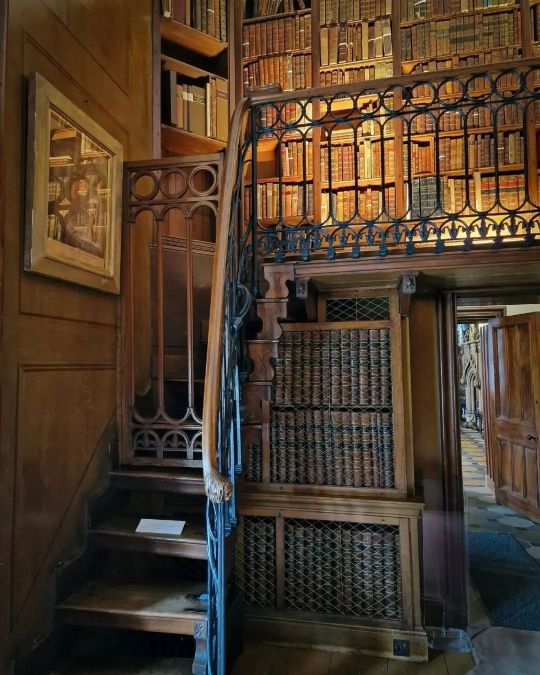
scotlandhiddenadventures
Abbotsford, the home of Sir Walter Scott
#scotland#Abbotsford House#the home of Sir Walter Scott#historic country house#scottish country house#library aesthetic
445 notes
·
View notes
Text

Abbotsford, Melrose, United Kingdom,
The Home of Sir Walter Scott,
#art#design#architecture#history#luxury lifestyle#style#luxury house#luxury home#united kingdom#abbotsfors#sir walter scott#melrose#gardens#landscaping#garden design#landscape design#scotland
4K notes
·
View notes
Text
This is just a preview of the many amazing books that will be posted in the upcoming weeks and months. Classics, first editions, Victorian bindings, book sets... I'm so excited to share everything with you!
instagram
#books#books & libraries#booksbooksbooks#bookshelf#bookshop#bookstore#home library#old books#antique books#antiques#bibliophile#book decor#book addict#sir walter scott#rare books#lady of the lake#bookstagram#book lover#Instagram
4 notes
·
View notes
Text
Me for the past week: Damn I really need to focus on writing this paper about revolutionary self-perception in 1789-1794 France. No distractions, just relevant stuff, deadline's coming up.
Instead:
Maria Edgeworth's 1817 novel Harrington contains a vivid evocation of the Gordon Riots, with two unsympathetic characters taken for Papists and finding refuge in the home of the rich Spanish Jew, the father of the young Jewish woman at the centre of the love story.
huh never heard of her I wonder what was up with her
She held critical views on estate management, politics and education, and corresponded with some of the leading literary and economic writers, including Sir Walter Scott and David Ricardo.
that David Ricardo? from economics?
After Honora died in 1780 Maria's father married Honora's sister Elizabeth (then socially disapproved and legally forbidden from 1833 until the Deceased Wife's Sister's Marriage Act 1907)
wait what
The Deceased Wife's Sister's Marriage Act 1907 (7 Edw. 7. c. 47) was an Act of the Parliament of the United Kingdom, allowing a man to marry his dead wife's sister, which had previously been forbidden.
ok yeah that's pretty much what it says on the tin
The 1907 Act did exactly what it said and no more. It was amended by the Deceased Brother's Widow's Marriage Act 1921 to allow a widow to marry her deceased husband's brother.[36][37] This was a response to First World War deaths to encourage remarriages, reducing war widows' pensions and increasing the birth rate.[37]
the war really did do a lot for gender equality didn't it
anyway what was up with Maria Edgeworth, let's catch up with her
When passing through the village, one of the party wrote, "We found neither mud hovels nor naked peasantry, but snug cottages and smiles all about".[10] A counter view was provided by another visitor who stated that the residents of Edgeworthstown treated Edgeworth with contempt, refusing even to feign politeness.[11]
Ireland moment
Following an anti-Semitic remark in The Absentee, Edgeworth received a letter from an American Jewish woman named Rachel Mordecai in 1815 complaining about Edgeworth's depiction of Jews.[45] In response, Harrington (1817) was written as an apology to the Jewish community.
imagine if Graham Linehan had responded this way to criticism of his transphobic IT crowd episode :)
Rachel Mordecai married widower Aaron Marks Lazarus in 1821, and moved to Wilmington, North Carolina, where she lived for the rest of her life. The Lazaruses had four children together, three daughters and a son, M. E. Lazarus, in a household that also included Mr. Lazarus's seven children from his first marriage.
oh the lady had a son who she named after the author she liked who turned out to be willing to not be anti-semitic, that's nice
Marx Edgeworth Lazarus (February 6, 1822 – 1896) was an American individualist anarchist, Fourierist, and free-thinker.
oh well that sounds nice enough
Lazarus was a practicing doctor of homeopathy
ehhhh
Through his adult life, Lazarus tried to cope with apparent mental and physical disturbances, in particular what seemed to be chronic nocturnal emissions, a condition that at the time was labeled "seminal incontinence" or "spermatorrhea," believed to be detrimental and even fatal to the mind and body. Lazarus sought treatments through homeopathy, hydropathy, and electromagnetic treatments that seemed to bring some temporary relief. He also discussed the condition in his 1852 book Involuntary Seminal Losses: Their Causes, Effects, and Cure," where he suggested that the total sexual abstinence that he had tried to practice might be one of those causes. In 1855, Lazarus shocked some of his fellow Fourierists and free love advocates by marrying a 19 year old woman from Indiana, Mary Laurie (or "Lawrie).[1]
oh... a libertarian...
By the mid-1850s, social movements like Fourierism were in decline, and Lazarus's later life seems to have had less focus. When the Civil War broke out, most members of Lazarus's extended family lived in Southern states and generally supported the Confederate cause. In 1861, Lazarus, was staying with relatives in Columbus, Georgia and joined the local City Light Guard when war broke out, later serving as company physician for the Wilmington, NC Artillery.
on the one hand, obviously very bad to enlist in the Confederate army right, but on the other hand a semen retentionist doing homeopathy to them can't really be classified as "aiding" them can it
After the war, Lazarus continued to practice his areas of medicine and contributed articles and comments to various publications.[5] By his last years, though, he had become a disenchanted recluse known as the "Sand Mountain Hermit" of Jackson County, Alabama.
most normal libertarian
I wonder what those articles and comments are, and what kind of website they're hosted on. Oh.
#you start with the revolutionary french intellectual milieu#you end up reading about a jewish confederate anarchist semen retentionist homeopath hermit#wikipedia hole#I do have the paper done finally but unfortunately I didn't manage to deploy this section of the research
79 notes
·
View notes
Text
A note for readers of Wildfell Weekly (as well as others): the book that Gilbert buys for Helen Graham, Marmion by Sir Walter Scott, appears to have been extremely popular in its time; it is mentioned by characters in several other famous novels of the 1800s.
St. John Rivers buys it for Jane in Jane Eyre:
“I have brought you a book for evening solace,” and he laid on the table a new publication—a poem: one of those genuine productions so often vouchsafed to the fortunate public of those days—the golden age of modern literature. Alas! the readers of our era are less favoured.”
…While I was eagerly glancing at the bright pages of “Marmion” (for “Marmion” it was)…
…I had closed my shutter, laid a mat to the door to prevent the snow from blowing in under it, trimmed my fire, and after sitting nearly an hour on the hearth listening to the muffled fury of the tempest, I lit a candle, took down “Marmion,” and beginning—
“Day set on Norham’s castled steep,
And Tweed’s fair river broad and deep,
And Cheviot’s mountains lone;
The massive towers, the donjon keep,
The flanking walls that round them sweep,
In yellow lustre shone”—
I soon forgot storm in music.
It is also mentioned by Mina in Dracula (though she, or Stoker, makes a small error - the scene mentioned involves characters from Whitby Abbey, but occurs in Lindisfarne, a tidal island that was also, long ago, the home of the illuminated Lindisfarne Gospels):
Right over the town is the ruin of Whitby Abbey, which was sacked by the Danes, and which is the scene of part of “Marmion,” where the girl was built up in the wall.
The book is a poetic epic set at the time of the Battle of Flodden Field (1513); I like the poetry a great deal, and the plot is nicely dramatic and Romantic, despite values dissonance (I do not find the title character as sympathetic as Scott does).
All this is to say - would people be interested in reading this story beloved by so many of our favourite characters? I could put it together as a Substack newsletter and email it out a little a day (probably for a few months total) starting in the new year. It’s not long (about 150 pages), it’s a good read with excellent poetic cadences and lots of high drama and imagery, and it gives a sense of what was popular among people who enjoyed the Gothic and Romantic.
#wildfell weekly#jane eyre#dracula#dracula daily#mina murray#the tenant of wildfell hall#marmion#sir walter scott
57 notes
·
View notes
Text
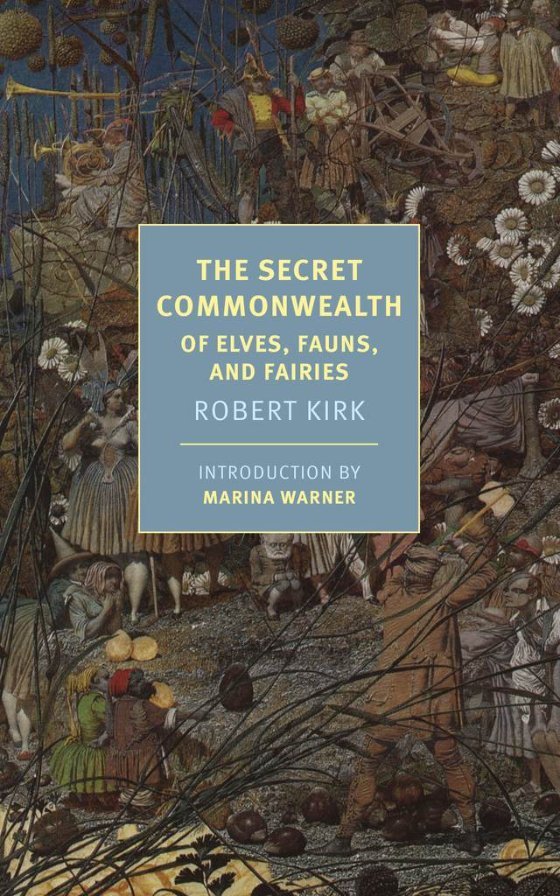
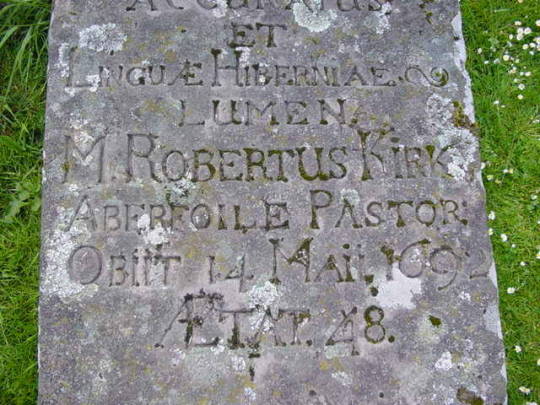
Reverend Robert Kirk was born on December 9th 1644 at Aberfoyle.
Kirk was the seventh and youngest son of James Kirk, minister at Aberfoyle, Perthshire. He studied theology at St Andrews and received his master's degree at Edinburgh in 1661. He became minister of Balquhidder in 1664, and later of Aberfoyle, from 1685 until his death in 14 May 1692.
Robert Kirk is best known for his book “The Secret Commonwealth of Elves, Fauns, and Fairies” in 1691. In his book Kirk tells stories about folk who had contact to fairies including himself. Kirk also believed that the local Doon Hill was the gateway to the world of the fairies, also described as “The Secret Commonwealth“. Kirk is also known as the first person to translated the bible into Gaelic.
Reverend Kirk was a former resident of the Old Manse which is situated nearby the Fairy Knowe. The same house is known for the place where Sir Walter Scott wrote his famous poem “The Lady of the Lake“.
Not much off a story as such, but it was what happened after his death that is the bones of this post.
Having collapsed on Doon Hill during the night he was carted home and died of a suspected heart attack, but It is said that Reverend Kirk actually didn’t die on the hill but was carried away by the fairies. Thereafter Reverend Kirk appeared as a vision in front of his cousin Graham. He told him that he was not dead and that he would appear at the christening of Graham’s child. For Reverend Kirk it would be the only way to come back to life. When he appeared at the christening, Graham was to throw an iron dagger over Kirk. This would release him from captivity. Graham was too scared though and couldn’t do it. Now it is believed that Reverend Kirk’s soul is still inside the lone Scots Pine tree on Doon Hill.
His walks to Doon hill started usually from the church or The Manse. Doon hill is also known as “Fairy Knowe” or “Dun Sithean”. Locally the fairies have the name “Sithe”. The fairy walk leads to the conical hill which is situated in a relatively flat landscape by Aberfoyle.
Second two pics are his his grave at Aberfoyle
Much more about the Rev here https://www.thebottleimp.org.uk/.../the-supernatural.../
35 notes
·
View notes
Text
Book tour of Scotland
Scotland, a country of wonder and mystery. This is also the topic of our current exhibit for the reminder of the summer. Scotland has become a topic of pop-culture over the recent years, though it has always been an area of interest for travel, history, and adventure. While we cannot provide any resources for accessing magic time-traveling stones, we do have a small collection of men in kilts featured in this exhibit. Louisiana and much of the southern region of the United States has a strong Scottish heritage, there are several families with Scottish and Irish rooted names. In support of seeking family heritage, we have a small collection of Scottish clans in their tartan on display and a few books for those genealogical researchers to find their family’s possible tartan color.
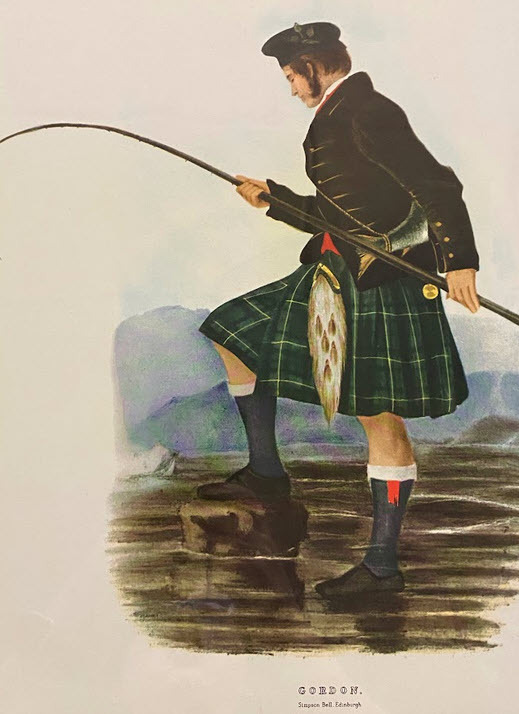
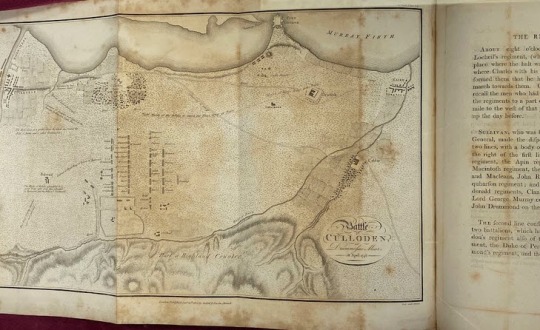

However, Scotland is more than names and weaving patterns. We also highlight Scottish literary works, though that would be an exhibit of its own but we proudly boast our copies of Sir Walter Scott and Robert Burns. And it is difficult to discuss any European literary history and tradition without including at least one book that discusses the influence of fairy-stories. The British Isles are rich with fairy-lore and their own folktale heritage. The book selected for its discussion of Scottish folklore heritage has not only a chapter on fairies but also on ghosts.


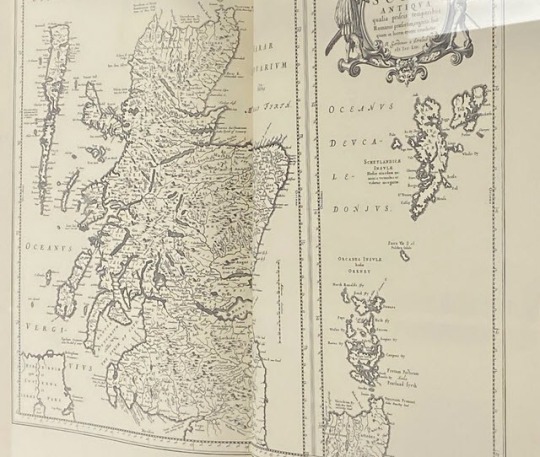
Scotland has had a haunting history of rebellion because of its desire to remain an independent country with its whole ruler and government. This is highlighted through the line of Stuarts and the last try for the Scottish crown by the ol’ Bonnie Prince. We do host quite the collection of materials regarding the Scottish rebellions and feature a text with an inlaid map of Culloden during the Rebellion of ’45. This was known as the shortest and most tragic battle for not only Scottish families but also the Jacobite rebellion. While the Jacobite rebellion made history, it is not the only famous location in Scotland. There are a great number of famous and historic locations in Scotland, not only because of its capital, Edinburgh, but also because it was one of the most well mapped areas of the 1600s.
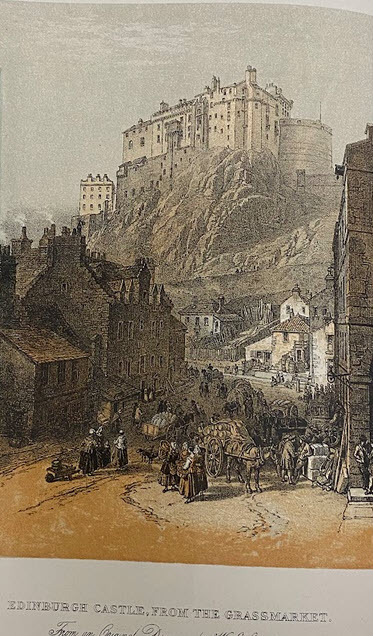
The diverse landscape makes the country a hot spot for hikers, sightseers, and general adventures. Scotland is also home to various species of wildlife and livestock, like the Highlander cattle and pony. It was the Highland pony that would lead to the development of the Clydesdale breed. The industries of academic, farming, and science based in Scotland have produced a strong economic infrastructure of the county.
48 notes
·
View notes
Note
What do you think considered as traditional clothes of English?
I’m not English so I'm probably not the best person to ask. But I wouldn't say they have much on a national level now, as an outsider. Regionally they do - areas like Cornwall which view themselves as being distinct from the wider country - but there isn't really an English national dress to my knowledge. That's actually not that uncommon though. Unified, national forms of folk dress in Western Europe are generally much more recent inventions. Most came about in the 19th century because during that period lots of European nations were undergoing a romantic national revival or they were getting independence and wanted to form a single national identity. Before that regional dress was far more common. So for example in Sweden different areas still have their own distinct forms of folk dress - you can see the royals wearing those associated with their summer home Öland or Princess Sofia wore her home province's traditional dress for her son's christening - but the national blue and yellow one was invented in the early 1900s and only really took off when Queen Silvia wore it in the 1980s. In Norway the bunad is based on earlier forms of regional folk dress but became a distinct thing in the 20th century after Norway got independence. Even where I'm from in Scotland, the kilt was usually worn in the Highlands of Scotland (and in fact Lowlanders often hated anything associated with the "primitive" Highlanders). It became something that was associated with Scotland as a whole because of Sir Walter Scott, the Scottish writer from Edinburgh (Lowlands), and his romanticising of the Highlanders in the 19th century.
14 notes
·
View notes
Text

12.05.2023 - I've had a hectic week, so it's nice to get some me time with some books, tea, and a muffin. Not sure how long it's going to last as I've got to go out for a family member's birthday meal as soon as my brother gets home from work... But I'm enjoying it while it lasts.
Oh and DON'T READ MY KOBO SCREEN! IT HAS SPOILERS ON IT and I didn't process it until now - sorry!
Currently reading: The Lost Metal by Brandon Sanderson; Waverley by Sir Walter Scott; The Farthest Shore by Ursula K Le Guin.
#studyblr#gradblr#books#reading#bookblr#the lost metal#spoilers#do not read my kobo screen! it WILL spoil the book!#brandon sanderson#cake
43 notes
·
View notes
Text

Running Water in Scottish Folklore
There are many sacred springs said to have different types of supernatural powers in Scotland, but even just a regular stream had many uses in folklore. One of these uses is protection from evil creatures, spirits, fairies, or ghosts.
What this meant is that if you are being chased by a supernatural evil, all you had to do was jump over a stream of running water. Like a wall, that water would prevent the creature from getting to you.
This is why some stories feature a fairy trying to convince a human to cross a stream to be on the same side as the fairy. In other stories, the fairy is trying to catch a human before they can get to the water.
For example, in one of the most popular stories of a Nuckelavee, a man manages to get away from the frightening creature by jumping a stream.
“Tammie saw his opportunity, and ran with all his might; and sore need had he to run, for Nuckelavee had turned and was galloping after him, and bellowing with a sound like the roaring of the sea.
In front of Tammie lay a rivulet, through which the surplus water of the loch found its way to the sea, and Tammie knew, if he could only cross the running water, he was safe; so he strained every nerve.
As he reached the near bank another clutch was made at him by the long arms.
Tammie made a desperate spring and reached the other side, leaving his bonnet in the monster’s clutches.
Nuckelavee gave a wild unearthly yell of disappointed rage as Tammie fell senseless on the safe side of the water.”
Scottish Fairy and Folk Tales by Sir walter Scott(1893)

English: Scottish fairy tale “Nuckelavee”. Caption: Tammie felt the wind of nuckelavee’s clutches. Source: Scottish Fairy and Folk Tales
How exactly the water works can change slightly depending on the area or the story.
For example, some believed the direction of the water mattered.
“This, particularly southward-running water, is holy, and cannot be passed by evil spirits.”
A Encyclopedia of Fairies by Katharine Briggs (Published in 1976)
In “The Water-horse in Bracadale,” a water horse is chasing a young girl, who manages to make it to a stream. The story specifies that the water only gained power by the call of a rooster.
"Over the stream leapt the terror- stricken maiden, just as the cock began to crow in Balgowan, the Smith’s Hamlet.
Now, this cock’s crowing meant the saving of the girl’s life, since it acted as a spell on the enraged water-horse, who thus was hindered from crossing the stream.
In this wise the maiden escaped to her home but the water-horse cried after her :
"DuilicJi c, duilich e, alltan!
Sad it is, sad it is, streamlet ! ”
And to this day the little stream flowing by the church of Bracadale goes by the name of the Alltan Duilich, the Difficult Streamlet. The Water-horse in Bracadale. "
The Peat-Fire Flame: Folk-Tales and Traditions of the Highlands and Islands by Alasdair Alpin MacGregor (1937)
Most often, however, you will come across stories where it is any running water that can protect you.
One interesting addition to the folklore is that it is only creatures or ghosts with evil intent that can not cross the streams. This explains why certain fairies that live in running water could also be blocked by it.
“Some authorities hold that the good folk are not averse to crossing running water . It is only a wicked class of them whose powers are blunted by traversing flowing streams .”
Folk Lore in Lowland Scotland by Evelyn Blantyre Simpson (1908)

BONUS HISTORIC AUDIO RECORDINGS
(link) People believed that if there was running water between a person and a ghost or evil spirit he would be safe. They also believed that water from the place where three burns met would cure ailments.
(link) Annie Johnston explains that this song was composed by a fairy woman. She was trying to entice a herdsman to cross a river and come into a fairy hill. She could not cross water.
#scottish folklore#sidhe#sith#FairyBasics#scottish#fairies#fairy#mythology#folklore#scottish mythology#scottish myths#ScottishPaganism#ScottishFolklore#scottish history#Scottish Folklore and History#fae#faeries#fair folk#Folkmagic
45 notes
·
View notes
Note
Your thoughts??
"In our dreams, we have limitless resources and the people yield themselves with perfect docility to our molding hands. The present education conventions fade from their minds, and unhampered by tradition, we work our own good will upon a grateful and responsive rural folk. We shall not try to make these people or any of their children into philosophers or men of learning, or men of science. We have not to raise up from among them authors, editors, poets or men of letters. We shall not search for embryo great artists, painters, musicians nor lawyers, doctors, preachers, politicians, statesmen, of whom we have an ample supply…The task we set before ourselves is very simple as well as a very beautiful one, to train these people as we find them to a perfectly ideal life just where they are. So we will organize our children and teach them to do in a perfect way the things their fathers and mothers are doing in an imperfect way, in the homes, in the shops and on the farm."
General Education Board(Rockefeller philanthropy), Occasional Papers, No. 1
You guys are kicking the doors of my inbox with some hardcore stuff, and I love it.
Short answer: the educational system is a scam. But you can figure that out just by reading the General Education Board.
Long answer? Well, before I start, let me quote this Scottish dude that died in 1832:
"Every man who has become, in any way, valuable, has taken the reins of his own education." ‒ Sir Walter Scott
The "history of education" is an extensive research that, after some point, revealed itself as fruitless to me, as I was busy with other interests. No mainstream media and easy-to-find books will help you on this journey. But it's a good start for anyone who wants to understand more about how this world works. I must say this is not a road for the faint of heart. If you don't have a solid, truthful hope, you might go a bit nuts.
During my bachelor's degree, after dropping 4 half-completed graduations, my keen nose guided me to study about this and one thing led to another. You end up seeing the same family names, their companies, then you check a bit of underground history and politics, artistic movements, ideologies, parties, big tech and pharma development... I mean, none of this is new. It's been happening since forever, so let's get a bit more dystopic and realistic here:
We are under a big system that wants to smash your face into the ground and break your teeth. They will give you the illusion of two polarized sides, and make you fight your brothers and sisters till death, while hiding truth in plain sight and keeping you busy on a 9-5, confused and tired. Always sedated, if possible. Always scared. I was actually working on a poem that goes like this:
"There they teach you to love what's bad
Here we teach you to hate what's good
They teach you to tell lies
We teach you to hide truth"
Don't take me wrong, I'm all in for education. But I only believe in self educating. You will eat as much as you're hungry.
We are intelligent beings for a reason. We were designed to think and understand. But thinking is actually quite hard and not very encouraged anymore, and no one can actually teach you how to think. You have to learn by yourself. You have to want to think.
I mean, most people don't even stop and ask themselves why they are doing things the way they do. It's what my therapist says: stop the autopilot!
As a former teacher, I can tell you there is so much more to developing cognition and process of thought, and creativity, and virtue and social skills, than to sit in a classroom all day, being fed a very filtrated and distorted version of "world history". They teach you to hate true knowledge. And let me tell you this: the Rockefellers, the Rothschilds, and all their little friends, are not only relying on the educational system to remain on power.
And there is so much I could write on this, to be honest, but I don't want to. It's not necessary. I can quote George Orwell instead.
#hard subjects to talk about#keep them coming#no wait i didnt say that#but if youre interested in this or related subjects im happy to talk about it on dms#dystopia#research#information#education
3 notes
·
View notes
Text
Persuasion Reread: Lyme Tyme
I had forgotten just how much the visit to Lyme is, for Anne, about coming to terms with what she feels to be her own excess of emotion when it comes to her relationship with Wentworth (and, of course, lack thereof.) She’s convinced that Lady Russell would disapprove her lack of self-possession; meanwhile, no reader would ever dream of accusing Anne Elliot of any such thing, which tells us something about how painfully transparent Anne believes herself to be. She discusses Byron and Scott with Captain Benwick, and sighs internally over her own hypocrisy in matters of the heart. She’s very hard on herself, poor Anne. She congratulates herself on having normal dinner table conversation with Wentworth, and tries not to think too much about the charms of the Harvilles’ hospitality and home decor schemes. (Apropos of the latter: does this imply that Anne knows, for a fact, that Wentworth also carves? Help.) She continues to filter all of Wentworth’s awareness of her through her own assumptions, even as he seems to demonstrate that he remembers more of what she told him about Mr. Elliot’s relationship with Sir Walter than Mary does. Did I mention that I am suffering?
I adore the Harvilles, of course. I confess that I had completely forgotten that Harville gives Anne evidence of the fact that Wentworth, like Anne herself, is the person in his social circle who volunteers for difficult jobs, essentially. We know about his willingness to take women and small children aboard in defiance of his own rules, and now we learn about his coping with practicalities and others’ grief after Fanny Harville’s death. This is fine, I’m fine. Anne ends Volume 1 at Uppercross, grateful to have evidence of Wentworth’s friendship and regard for her judgment. But what is haunting me is the fact that in the aftermath of Louisa’s accident, when Wentworth, shocked and distraught, calls for help, Anne’s immediate response is to rally someone else -- anyone else -- to go to him. She cannot bear to see him unaided; she cannot bear to undertake a task of such intimacy herself.
#at this point i'm just shaking with suppressed emotion#completely incapable of having a normal amount of feelings#persuasion reread#persuasion#and anne </3#anne elliot#defense squad etc.
120 notes
·
View notes
Text
A haunted house is where the Armor is.
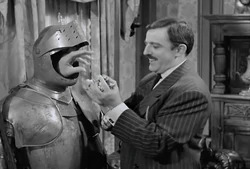

When it comes to spooky old houses, more often then not, you’ll see a suit of armor on display. Both the Munsters and Addams family found these great pieces of interior decor, and sometimes incorporated them into the plot. In one of the episodes, Uncle Fester got very upset, when Gomez and Morticia wanted to donate “his” suit of Armor, for charity. I wouldn’t be surprised if part of what made these suits of Armor popular, had to do with Charles Addam’s love of Armor. The cartoonist who did so much to popular horror media, and defined for many what a haunted house looks like, owned a suit himself, and allowed himself to be photoed wearing the helmet.

Disney understood how a suit of Armor was an essential piece of haunted house decor, so of course a suit was included in the endless hallway of the Haunted Mansion.

So, why this fascination with suits of armor, in modern times? Much of this has to do with Sir Walter Scott.(1771-1832). He was quite the celebrity during his age, and his romanticized novels of knights in Armor, led to many people who wanted to decorate their homes with these symbols of the past. If you couldn’t find an entire suit of Armor, you could have one created, sometimes using original parts.
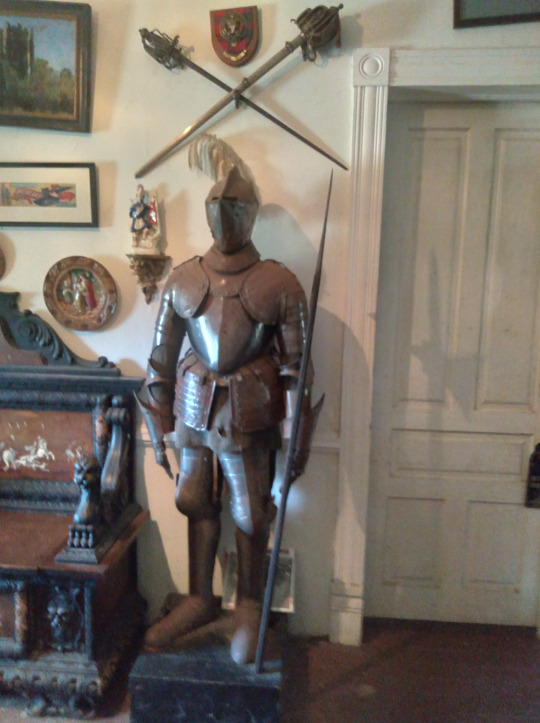
I’ve had this suit of Armor since I was a teenager. The Armor was originally a pikes-man's armor, circa 1590. However, to make this a complete suit of armor, a closed helmet from the same period was added,, and new legs were added, since a pikesman armor wouldn’t have had them. Although most of this suit dates from 1590, the legs were probably done around 1860.
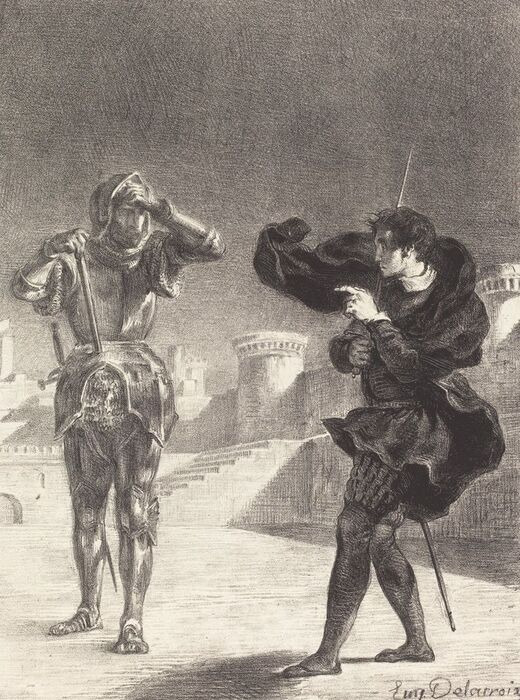
As far as a suit of armor featuring prominently in a haunted house, an early example of that might be “The Canterville Ghost” (1887) by Oscar Wilde. The story is about an American family who moved to a castle haunted by the ghost of a dead English nobleman, who killed his wife and was then walled in and starved to death by his wife's brothers. At one point of the story, the ghost attempts to scare off the family, by wearing his suit of armor. The Story was extremely popular, and I’m certain it led to the association with armor and spooky old houses to this day.

Closer to the present time, we have Scooby Doo keeping the idea of spooky armor alive in younger viewers, The show “Scooby Doo, where are you?” premiered in 1969, the same year Disneyland’s Haunted Mansion opened. The very first episode “What a night for a Knight” was an episode about a haunted suit of Armor. I have long been a fan of Suits of Armor, both the actual items, and the place the have in pop horror media.
89 notes
·
View notes
Text
Prompt: Answer this with five tracks you think represent your character best! If you don't have an OC, do it for a character you love!
Thank you to @shiinzhon for the tag! Lemme tag @unhingedravenclawstuff @wrenegade-accio @sallowslytherin @parselmouthedmelinae @holisticpearliegeek @catohphm and whoever else wants to do this!
---
Without further ado, here we go. Each song has a particular meaning in Elias' life. I'll break down each one as best as I can and perhaps provide some bonus tracks.
1. "Happy & Sad" by Kacey Musgraves
Kacey Musgraves explained that "Sometimes I find myself not being able to enjoy the height of a good moment because I start thinking about the fact that it’s about to be over." Since the trauma of the Philippine revolution affected him so deeply to the point that he lost so many people he cared about, Elias became a very cautious person, feeling like the highs he feels now will become lows very soon.
2. "Eyes Shut" by Years & Years
Y&Y frontman and songwriter Olly Alexander said, "The song is about self preservation and wanting to hide from disaster." This song is like a sort of follow-up to "Happy & Sad" for Elias, wherein he convinces himself that by detaching himself, he won't feel any hurt or loss. He feels the need to be stronger for his mom and himself. This is essentially the reason why he genuinely cannot bring himself indulge in the idea that he could be happy.
3. "Screaming" by CHVRCHES
The past five years Elias experienced since the attack on his home village has swept Elias into a tornado of unpredictable events. It feels as if misfortune has control of his life. He is both victim and witness to all that unfolds in his life and is forced to go with the flow of it all. He is frustrated over the trauma that holds his life. But towards the end of the song, Elias decides he cannot give up and keeps fighting for a better future.
4. "A Song to Come Home To" by Jinkx Monsoon
The song is a dedication to Elias' mother and his chosen family (his dear friends at Hogwarts). It's clear and simple a message: he will love them all no matter what. They never left him when the going got rough for Elias in so many ways, and he will reciprocate that for them as well because of the love that connects them all.
5. "panorama" by Hayley Kiyoko
"Wait, have you seen the view?"
This is Elias finally becoming in touch with himself and the world around him, finally being able to process all that has happened to him, l making peace with it all, and moving forward and accepting wholeheartedly the love and happiness he deserves. He can finally stop and look at all the good that has happened to him and enjoy it all. Sure, the feeling of the storm coming after the sunshine is still there, but learns to manage that feeling as well.
Author's note: If you all want a full Spotify playlist for Elias (and Sebastian as a couple), please do let me know. I'm willing to share it hehehe.
Bonus tracks under the cut!
6. Three Versions of Ave Maria
Okay, now hear me out before you think this is a weird thing to add to a playlist. Remember Elias was born during the Spanish colonization of the Philippines, which means Catholicism was rampant then. As a magical practitioner, Elias never felt a real connection with the religion but for some reason felt one with the Virgin Mary. Maybe it was that she reminded him of his mother, Ma. Aurora: kind, caring, and loving.
Now, why do I have three versions of Ave Maria listed? Let's explore them!
A. Franz Schubert/Josh Groban
Josh Groban, who is my voiceclaim for Elias, sings this version passionately as if he's pleading for help. In a way, it harkens to "Ellens Gesang III", a derivation of Sir Walter Scott's poem, "The Lady of the Lake". In the poem, the heroine, Ellen Douglas, is praying to the Virgin Mary for help, anxious over the fate of her father on the eve of an important battle. The same way, Elias secretly "prays" for safety as he and his mother leave the Philippines and will lead new lives in a foreign country.
B. Charles Gonoud & Johann Sebastian Bach/Amira Willighagen
This version by Bach and Gonoud and performed by Willighagen has a more angelic and heavenly approach to it. I used this iteration to represent Elias at his calmest and happiest. It is in this moment that he finds something good in his situation like a strongly-lit lighthouse in a stormy midnight. In a way, he begins to find this light when he learns to let his own guard down and open his heart, starting with Sebastian (to Anne's delight, that little schemer). This is Elias "praying" that this joy will last forever.
C. Franz Schubert/Beyoncé
The conclusion to Elias' Ave Maria trilogy is a wedding song by Beyoncé. This is that point in Elias' life where there is calm, joy, and the sense of stability that he's longed for since he and his mother were displaced. Elias is finally happy with his life. He has everything a boy like him could need: his mother, his best friends, and a loving husband. (Yes, Elias and Seb get married who wants to attend the wedding yaaaas)
It also makes sense to have this as the end to the trilogy as it is a rewrite of Franz Schubert's original Ave Maria, as performed earlier by Josh Groban.
---
More songs will be added at some point so stay tuned, I guess?
#hogwarts legacy#oc: elias mendoza#hogwarts legacy fanart#hogwarts legacy mc#hogwarts legacy oc#eliasmendoza interacts with people
10 notes
·
View notes
Text
I wanted to share this before the pride month ends! They’re not written by me, this is the original post
————————————
Robert Sean Leonard and LGBTQ+
On Stage
The Invention of Love by Tom Stoppard. Broadway, 2001.
RSL won a Tony and Outer Critics Circle Award for his portrayal of gay poet and scholar A.E. Housman, who struggles with his feelings towards his best friend and the love of his life, Moses Jackson.
The Violet Hour by Richard Greenberg. Broadway, 2004.
RSL played John Pace Seavering, an ostensibly straight character who nonetheless shares kisses with another man (played by future House guest star Scott Foley).
Fifth of July by Lanford Wilson. Broadway, 2003 (also Los Angeles).
RSL played a gay disabled Vietnam veteran, Ken Talley, living with his boyfriend in his childhood home and dealing with visiting relatives and friends over a summer weekend.
The Glass Menagerie by Tennessee Williams. Baltimore (Center Stage), 1997.
RSL played Tom, the fictional alter-ego of Williams (who was gay) in this autobiographical play about his family. Read an interview with RSL about Tennessee Williams.
The Shadow Box by Michael Cristofer. Benefit reading, 1994.
RSL played Mark, the young lover and caretaker of Brian (Christopher Reeve), a gay man dying from an unnamed disease assumed to be cancer. The performance of this 1977 Pulitzer Prize winning play was held to benefit a high school drama teacher in Tuscon, Arizona, who was fired for attempting to stage it due to its homosexual themes.
Into the Woods by James Lavine and Stephen Sondheim. Broadway workshop, 1987.
RSL played Jack (of Jack & the Beanstalk fame) in this musical about fairy tales. No expressly gay themes, but composed by openly gay LGBT icon Stephen Sondheim.
Breaking the Code by Hugh Whitemore. Broadway, 1987-1988.
A biographical play based on the life of Alan Turing (played by Sir Derek Jacobi), so-called father of the computer - a brilliant young man who, during WWII, helped to break the German submarine Enigma code. The play deals with his personality, his love of mathematics and also his homosexuality, for which he spent some time in prison. RSL played Christopher Morcom, a schoolmate who was Turing's first love and whose death, at the age of 17, was to leave a permanent mark on Turing's character. Description from this site. Read the thoughts of Andrew Hodges, on whose book the play was based.
Coming of Age in Soho by Albert Innaurato. The Public Theater, circa 1985.
The play concerns a writer named Bartholomew "Beatrice" Dante, who has fled to Soho to escape his wife of fourteen years and to come to terms with his art and his homosexuality. RSL understudied the role of Puer, an "astonishingly precocious teenager" who informs Beatrice that he is his son by a German terrorist with whom Beatrice had a brief but intense fling.
On Film
A Glimpse of Hell, directed by Mikael Salomon.
A 2001 cable movie which originally aired on FX, based on a 1989 incident that occurred aboard the USS Iowa when an explosion killed 47 sailors. RSL plays Dan Meyer, a Naval lieutenant who questions the Navy's official findings, which blamed the event on a homosexual relationship between two of the sailors.
In the Gloaming, directed by Christopher Reeve.
A 1997 cable movie which originally aired on HBO. RSL plays Danny, a young gay man dying of AIDS who returns home to be in his mother's care (played by Glenn Close). The DVD release date is unknown, but VHS copies are still available.
Books
The Short History of a Prince by Jane Hamilton, 1999.
RSL narrates this novel about the family struggles and coming of age of Walter McCloud, a gay teenager in the Midwest. The audiobook is out of print but you can still buy the novel.
Other
Auditioned for a role in "To Wong Foo Thanks for Everything, Julie Newmar"
“Douglas Carter Beane wrote the screenplay for “To Wong Foo,” and recalled all the actors’ auditions for the film. “John Cusack looked just like his sister Joan. Robert Sean Leonard was stunningly beautiful, Audrey Hepburn. James Spader—also beautiful. Willem Dafoe looked the way Mary Tyler Moore does now—the Joker’s sister, with that mouth. John Turturro—not pretty.”“
——————————
+I want to add, to my knowledge he’s listed as one of the actors funding broadway support organisation including AIDS/HIV

You can see he’s listed in this link
131 notes
·
View notes
Text
Traditional Scots Bonnet
I write ✍️ in response to the message.
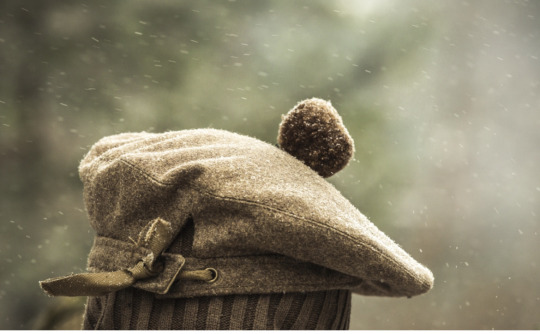
The Blue Bonnets of 16th Century Scotland
The traditional Light Blue Scots Bonnet or Bluebonnet (originally bonaid in Gaelic) from the 16th to the 18th century was the customary working wear of Scottish labourers and farmers. Although a particularly broad and flat form was associated with the Scottish Lowlands, where it was called "scone cap". The popularity of this hat spread into the Highlands was adopted by 1700. At this time, people knew Highlanders by the thick, blue or grey, wool bonnets they wore.
This blue bonnet was also associated with Jacobitism. There is even a Jacobite song called “Blue Bonnets Over the Border”, written down by Sir Walter Scott.

It’s the period that the Outlander series is set in, so this hat likely tried to inspire the Scots bonnets worn in the series.
These hats come with the white cockade symbol. When Prince Charles Edward Stuart arrive at Glenfinnan in 1745 he picked a white rose and placed it on his hat, hence the white cockade became the sign of the Jacobite supporters of his rebellion. There are several Scottish variants of the beret, notably the Scottish bonnet or Bluebonnet, whose ribbon cockade and feathers identify the wearer’s clan and rank.
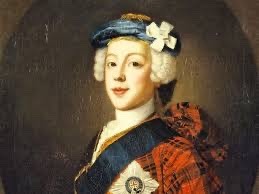
As seen above, the only Jacobite known to have worn a velvet bonnet before and during the ’45 was Prince Charles Edward. Even Lord George Murray, Prince Charles Edward’s main commander wore a woollen bonnet. Prince Charles Edward was only depicted wearing velvet blue bonnets, so it is not surprising that this bonnet was made from fabric & not knitted; this arguably was a symbol of status, something which set him apart from his men.

Scots Hat Types
Inspired by the hats traditionally worn by Scotsmen in the 16th to 18th centuries, Scots Bonnets, or Tam O’Shanters, were an integral part of a Scotsman’s attire. In the 18th century, the Scots Bonnet was the main item of clothing used to identify a Scotsman, even more so than tartan.
The Scots bonnet has been around since the early 16th century and has grown into several variations from the Balmoral bonnet, Glengarry hat, to the Tam O' Shanter cap. Being worn through wars on traditional uniforms for hundreds of years, the Scottish bonnet is a recognisable staple to most Scotsmen.
The Scottish hat, although named from Burn’s poem, existed long before. The flat bonnet was seen throughout Scotland from the late 1500s through the 1800s. It was similar to the common European hat but with a pom ( a “toorie”) on the top centre. Before the availability of synthetic dyes, the dye for wool for the hats came from plants and colors abundant in the region. The often-used indigo dye gives way to the name blue bonnet.
This hat is named after the hero in a Robert Burns poem. Robert Burns, arguably the most famous Scottish poet, often wrote about his surroundings and incorporated the elements and people into his great works. He was born near the town of Ayr and became friends with a farmer Douglas Graham of Shanter Farms, nicknamed Tam o’ Shanter. (Tam for the boy is often used and Shanter for his farm).
The 1790 Burn’s poem speaks of Tam, who, after a night of pub drinking, rides his grey mare Meg home during a frightful storm. While passing the haunted church (kirk), he encountered dancing witches and warlocks. As he stood in fear, the apparitions took notice of Tam.
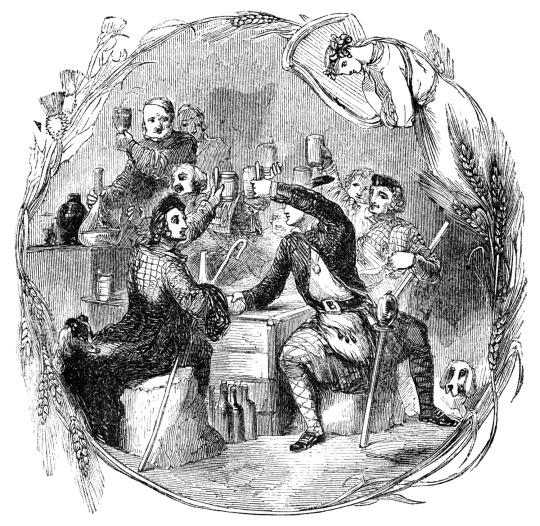
An old etched illustration of a Burns Night celebration.
The Tam O’ Shanter Inn is now a museum in Ayr. Tam and Burns would spend their days and nights in the small pub room, drinking and conversing, At this Inn, a series of paintings capture Tam’s ride depicted in Burn’s poem. On Tam’s head is a Scottish lowland bonnet that is woollen, flat, round, and blue with a pom on top. The Scottish hat, in its many forms, then became known as a Tam o’ Shanter, or simply, a tam hat.
There are several Scottish variants of the beret, notably the Scottish bonnet or Bluebonnet. In later years it came to be associated with Highland dress, and in the 19th century gave rise to other types of largely military headgear such as the more elaborate Balmoral bonnet, the tam o' shanter, (with the addition of a wire cage) the military feather bonnet.
“Scottish bonnet”. This term was used by The Earl Of Galloway, The Earl Of Morley, The Duke Of Richmond and Gordon, The Marquess Of Lothian and Lord Waveny during a debate in the House Of Lords (Army-Dress Of The Army—The Ostrich Feather Head-Dress Of The Highland Regiments) February 1884.
The bluebonnet can be traced back to 15th-century Scotland. From this point on other native Scottish headwear derived from the blue bonnet. The cap is now known as a modern classic, but it's lived through hundreds of years. The three main types of traditional Scottish bonnet hats are Glengarry, Balmoral, and Tam O' Shanter.

Original & Complete WW1 Scottish Officer's 1917 9th Royal Scots kilted uniform, belonging to a Lieutenant Colonel of the 9th (kilted) Battalion, Royal Scots. The Dandy Ninth.
Today, the bonnets have been replaced in daily wear by the Balmoral, there are still some who enjoy wearing an outdated, be it their more utilitarian form, or some simply enjoy their look, take a look around next time you're at a Highland clan gathering.
The tam o' shanter is now best known as the headgear of a number of Scottish infantry regiments and those with Scottish affiliations. The Scottish regiments made the Tam o’ Shanter (ToS) part of the official military uniform during the First World War. The ToS is still worn today in the military units, not only in Scotland but also in Canada and Australia. The beret's practicality is an item part of military uniform clothing.
Traditional Scottish Bonnet
The cap is now known as a modern classic, but it's lived through hundreds of years. The three main types of traditional Scottish bonnet hats are Glengarry, Balmoral, and Tam O' Shanter.
Glengarry hat

The Glengarry bonnet is said to have first appeared as the headdress of the Glengarry Fencibles, a military regiment formed in the 1790s. The cap is traditionally made of thick-milled woollen material. It is decorated with a toorie on top, a rosette cockade on the left side, and ribbons hanging behind.
In the 1850s, the Glengarry became a piece of uniform for Scottish Regiments of the British Army. It is now most commonly worn by pipers in the army.

Lieutenant Colonel Thompson (Equerry to HM The King) is an officer in the Royal Regiment of Scotland. In both No. 1 (Regimental Dress) and No. 2 (Service Dress), a Kilt in Government 1A tartan is the correct item of uniform with Glengarry bonnet.
Balmoral hat
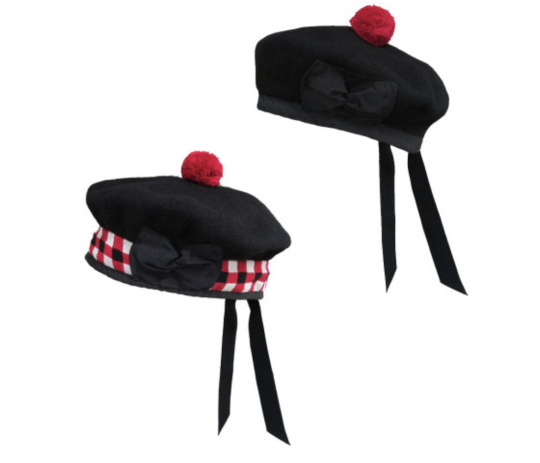
The Balmoral bonnet has been recorded to be worn as early as the 16th century. The hat was formerly referred to as the “Kilmarnock bonnet” or the “Kilmarnock cap”. The hat originates from the Balmoral Castle in Aberdeenshire, which is often occupied by the British Royal Family.
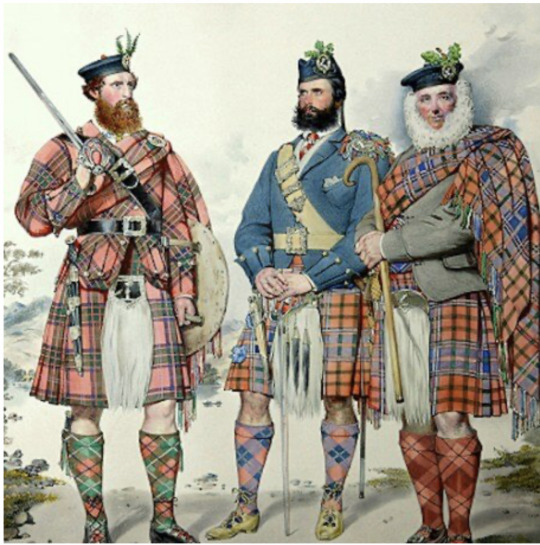
Queen Victoria’s Highlanders of Scotland
The bonnet takes the form of a knitted, soft wool cap with a flat crown. This traditional Scottish hat can be worn as part of both informal and formal Highland dresses, making it a beautifully diverse asset to your wardrobe.
Today, the Royal Regiment of Scotland continues to wear the cap. The various battalions of the Royal Regiment of Scotland identify themselves by wearing distinctive coloured feathers on their bonnets.
Tom O’ Shanter hat
The Tam O' Shanter cap is known best in Scottish culture by the famous 1790 Robert Burns poem, 'Tam O' Shanter'. It is sometimes known as the 'Tammie.' The Tam O' Shanter is a flat bonnet, originally made of wool hand-knitted in one piece, stretched on a wooden disc to give the distinctive flat shape.
FINAL THOUGHTS
While these hats originated in Scotland as part of the army uniform, they became part of the working class's wardrobe. Into the 19th century, the upper class embraced the bonnets for hunting and shooting all over the UK. Mass immigration of British to North America then popularised the cap in the USA, beginning the Scottish bonnet hat's worldwide journey.
Military and farmers are not the only ones in the tam game. Women adopted the fashion in the 1920s, and shorter haircuts came into style. Borrowing from men but making their own, women figured out ways to drape the hat in flatterable ways to frame their faces. The tam also saw spikes in popularity in the 1930s, with plaid and checks being fashionable and again in the 1970-1980s. Tams dominated the small hats in women’s fashion history over the years and today.
Massive fashion brands like Burberry and Vivian Westwood constantly added Scottish bonnet hats to their runway collections. Today, the Scottish bonnet hat is a globally recognisable piece of fashion.
***
Well... as you can see no such thing as an item of clothing called a Scotch bonnet but then if Diana Gabaldon did any research she’d know that. No self-respecting Scot would ever refer to themselves as Scotch.
By the way, the scotch bonnet is a variety of chilli pepper named for its supposed resemblance to a Scottish tam o' shanter bonnet. Scotland today uses the word Scotch whisky 🥃 as well as Scotch broth and Scotch mist not in another context.
***
Thank you, anon for the the discussion was a nice chat. Hope this clarifies your queries. ☕💬 😉💙
#LightBlueScotsBonnet #Bluebonnet #poem #RobertBurns #Glengarryhat #Balmoralhat #TamO'Shanterbonnet #Kilmarnockcap #Scotland
16 notes
·
View notes